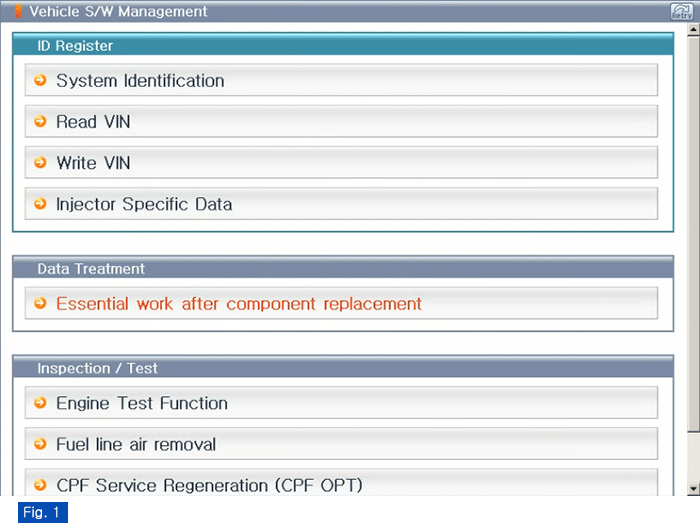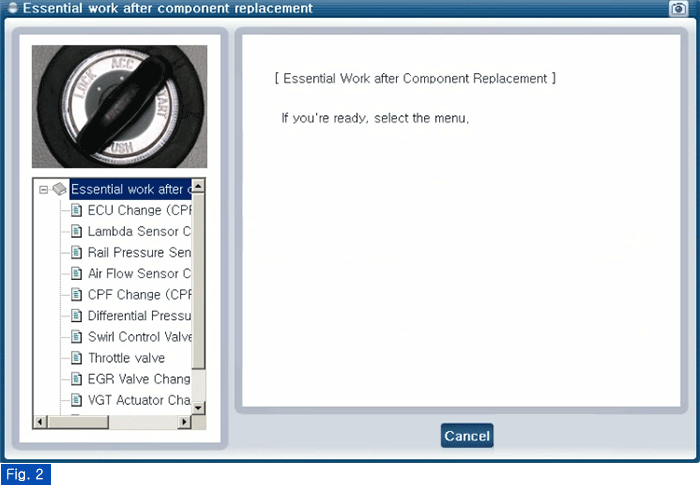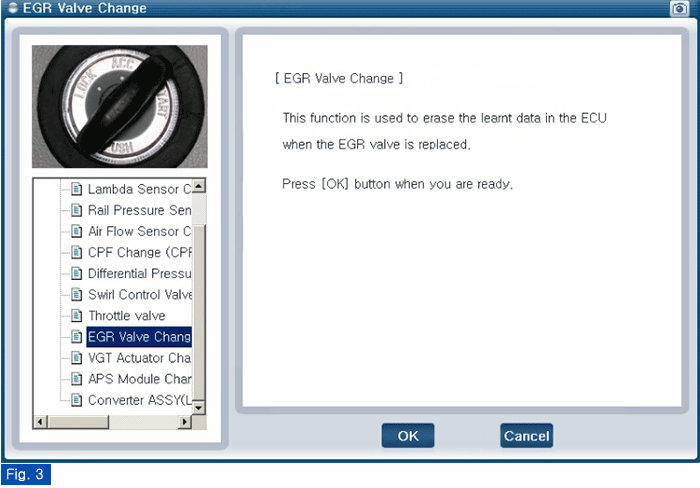Have problem been found?
 | ▶ Repair as necessary and then go to "Verification of Vehicle Repair" procedure. |
 | ▶ Go to "EGR Actuator Inspection" procedure. |
Refer to "Shop Manual" and inspect for following conditions;
- Tear, crack or damage on intake hose/pipp after the ACV.
- Damage or air leakageon intake system include inter-cooler and pipe/hose.
- Crack or damage on Re-circulation path of exhaust gas.
Have problem been found?
 | ▶ Repair as necessary and then go to "Verification of Vehicle Repair" procedure. |
 | ▶ Go to "EGR Actuator Inspection" procedure. |
Ignition switch "OFF"
Connect GDS to Data Link Connector (DLC).
Ignition switch "ON"
Perform "EGR Valve Position" in "Actuation Test" with GDS.

Fig.1) EGR Valve Actuation Test
Is the parameter dispalyed within specification?
 | ▶ Fault is intermittent caused by poor contact in the sensor's and/or ECM's connector or was repaired and ECM memory was not cleared. Thoroughly check connectors for looseness, poor connection, bending, corrosion, contamination, deterioration, or damage. Repair or replace as necessary and go to "Verification of vehicle Repair" procedure. |
 | ▶ Carefully re-do this troubleshooting guide steps. ▶ If no problems were found with the circuits or connectors, replace the E-EGR Actuator and go to "Verification of Vehicle Repair" procedure. |
When installing component, tighten it within specification.
If component is dropped, check for proper operation. The internal damage may be present.
When EEGR is replaced, perform "Essential work after component replacement. Otherwise, vehicle performance and emission control may not work properly until auto learning is completed.
Ignition Switch "OFF"
Connect GDS to Data Link Connector(DLC).
Ignition Switch "ON" & Engine "OFF"
Perform "Essential Work After Component Replacement" in "Vehicle Software Management" with GDS.
Select "EGR Valve Change"




Fig.1) Vehicle S/W Management list of Engine
Fig.2) "Essential Work After Component Replacement"
Fig.3) EGR Valve Change
Fig.4) Complete